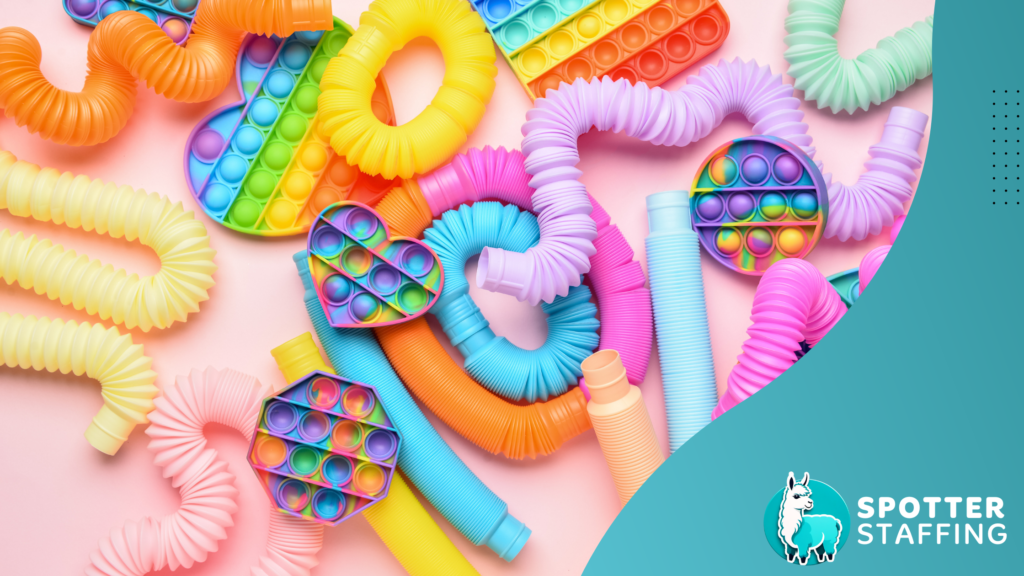Every school professional knows “no two students learn in the same way.” And as we continue to navigate the diverse needs of our students, it’s essential to recognize and accommodate the wide spectrum of sensory processing abilities in our classrooms. By fostering an inclusive environment through sensory-friendly teaching strategies, we can empower every student to thrive and succeed through enthusiasm and compassion.
Understanding sensory processing needs is step-one in designing an inclusive learning space. Some students may be hypersensitive to stimuli, while others may seek sensory input. By implementing simple adjustments, we can create a school environment that promotes learning for all.
Use the following strategies from Spotter Staffing for a sensory-friendly classroom:
- Flexible Seating Arrangements: Offering different seating options like bean bags, cushions, or standing desks can help cater to different comfort preferences and sensory needs.
- Visual Supports: Using visual aids like schedules, charts, and diagrams can improve students’ understanding and provide structure, which can also help lessen their anxiety and promote independence.
- Sensory Breaks: Incorporating short sensory breaks into your classroom’s daily routine can help students recharge their sensory systems. Activities like stretching, deep breathing exercises, or sensory bins can make this happen.
- Noise Management: Creating a quiet corner with noise-canceling headphones or giving students earplugs can help with their sensitivity to noise. Using soft background music or white noise can also serve to minimize distractions.
- Lighting Adjustments: Ensuring enough natural lighting gets in the room can minimize your need for harsh fluorescent lights. Dimmer switches or adjustable curtains can also help regulate light levels according to students’ needs.
- Sensory-Friendly Materials: Choosing classroom materials with different textures and tactile qualities has been shown to help with sensory preferences. Incorporating fidget toys or stress balls can provide sensory input and promote focus in your classroom.
By embracing sensory diversity and implementing these strategies, we can cultivate a supportive and inclusive learning environment where every student feels valued and respected. Together, we can unlock the full potential of our students and foster a love for learning that transcends barriers.
Looking For A Better School Career?
Spotter Staffing has you covered! Our positions offer competitive pay, health benefits, 401(k) options, paid time off, and so much more. Click here to check out our open jobs online and find out why Spotter isn’t just a better job, we’re a brighter future.


